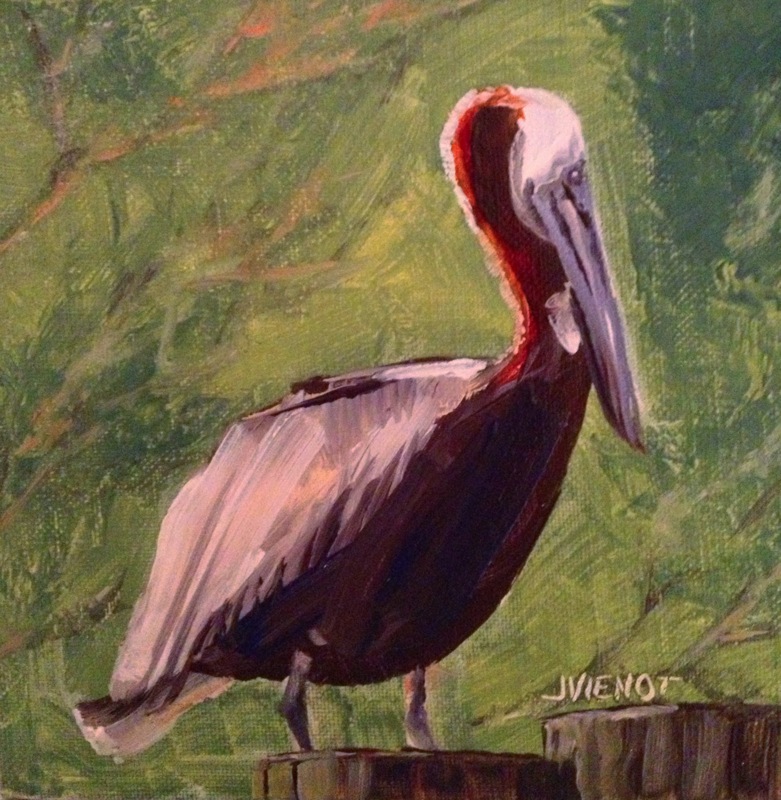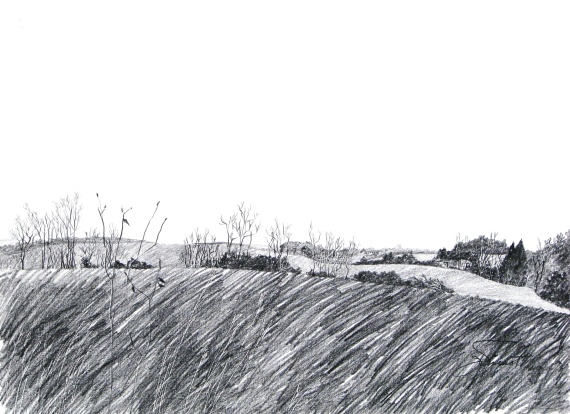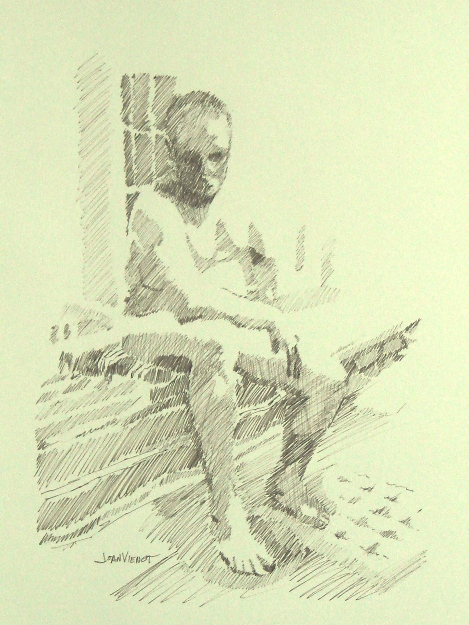
 |
 |
 |
 |
 |
. |
I have set a goal this year, to make a transition in my life, to live at least two days a week as an artist by the end of this year. It may happen lot sooner than that. It all started when I decided to hold myself accountable for not yet having made the leap. Frankly, I’ve been fearful that I would not be able to support myself with my art, a legitimate concern up until this point, since I have been sporadic in my production of art. To support my fear, I have used every excuse not to be more prolific, or in many cases, to go days without sketching or painting. My most frequent excuse is that I do not have time. Guess what — I do have time — I’ve been less than truthful with myself. I simply have chosen to use my time for other purposes, instead of for producing art.
I hired a coach, to give me suggestions and feedback for making progress towards my goal. One of the things she asked me, was what an ideal day would be like for me. I described waking up rested, taking some time for meditation and then working out or paddling or doing some other fitness-oriented activity, followed by a visit to a gallery or some other “artist-date”, and then painting all afternoon, probably plein air painting, followed by a cultural event in the evening, perhaps a play or dance theater or a musical performance. But then I thought to myself, about a week later, that if I had described that as my ideal day, then why had I not ever had an ideal day, and I realized then and there that I was lying to myself, because I have had unscheduled days before, but have not ever done all the things that would make up an ideal day.
So when one of my best friends called last week and asked another friend and me over for breakfast on Sunday, and I declined because I had other tentative plans, I instead invited her over to my art studio on Saturday because I intended to paint. She is a writer, so I asked her to bring her paper so she could write while I painted. She offered to bring breakfast. Meanwhile, Saturday brought incredibly bad weather with it, and another friend decided to cancel a trip to see a client, and instead came over to my house to wait out the rain and to work on a drawing she was making. So the morning found the three of us in my studio, painting and talking and solving the world’s problems. I made a small painting of some young bananas growing on a tree that I had photographed on North Caicos a few weeks ago. At left is the sequence of development.
I cannot describe the creative spirit that filled the studio while we talked and worked. I was in awe of the circumstances that brought us all together, and the energy of the dynamics. Both friends left around midday, and I took another half-hour or so to finish my painting, before going upstairs to get my house ready for the evening activity. I had invited 6 friends to participate in “The Art of Seeing” class which Ponce de Leon, FL, artist Mary Moses teaches through her gallery, HRMagoo. I still needed to trim the legs on 3 of my stools so everyone would be comfortable at my art table, and I needed to go to the deli to pick up the supper wraps I would be serving.
Mary brought a friend with her, guitarist/artist/singer/songwriter Sharon Johnson, who played her guitar and sang while the rest of us learned the Art of Seeing. Mary demonstrated, toning a plywood board with charcoal and then showing us how she picked out shapes and faces from the patterns in the wood grain, and then developed them. We all dove in, everyone in the group helping each other “find” shapes in their panels, with a good amount of laughter, all inspired, often awed, always positive, and occasionally raunchy, and all in all, a lot of fun. The time flew, and we all had a great time.
I think I probably could continue to work on my panel, but I am surprised and happy with what I did so I may just call it finished as is. It is not at all like any art I have ever made before, and it is uniquely my own, in that I drew the shapes and faces that for the most part I alone saw, and in my own way, without pre-planning the composition. I found a number of faces on my panel, including a few aliens and a horse and two elephants and a covey of birds. I assign significance and meaning to it which no doubt would alarm my some of my friends and family and perhaps cause them to look askance at me, so I’ll leave that unexplained for now, and settle for letting you do the interpreting and drawing your own meaning from it. It is below left.
I would say that this day qualified as an ideal day.
I painted the pelican, below right, a couple of days later, using a reference photo from my vacation on Providenciales in January.
 |
 |
Most of my images are available for purchase. Contact me if you are interested. — Joan Vienot











































